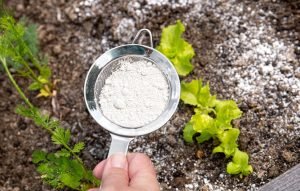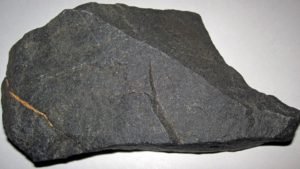Deep in the earth’s crust, millions of years ago Diamonds were formed. Intense pressure and extreme heat crystallized carbon atoms into formidable tetrahedral bonds that could not be broken, creating one of the hardest substances known to man.
The earth’s core is divided into three layers, Crust, upper mantle, mantle, outer core, and inner core. Geologists believe that the earth’s mantle has a temperature of between 900°C to 1300°C and a pressure of between 650,000 psi and 850,000 psi, just the right conditions for diamond formation.
The stable immobile continental shelf called craton, mostly found in Africa and Australia creates perfect diamond creating zones. After being formed diamonds lie deep in the earth’s crust for years, before finding their way to the earth’s surface through kimberlite pipes.
There are three ways Diamonds are formed in nature:
Diamonds formed in the subduction zone
These are formed when tectonic plates collide, and one landmass is forced underneath the other, creating a subduction zone. Materials that are rich in carbon melt under the high temperature and extreme pressure forming pockets of Diamonds.
Diamonds formed by Asteroid impact
The other is when an asteroid strikes the Earth’s surface. This collision results in a massive explosion of heat and pressure on the ground. Carbon-based deposits in the impact crater are instantly crystallized into diamond specks.
Diamonds formed by meteorite fall
Diamonds can also be created in outer space, through meteorite showers that sometimes find their way to the earth’s surface, depositing showers of Diamond crystals.
Interestingly Diamonds can also be created in Laboratories. These Nanodiamonds as they are known are one of the greatest man-made inventions. There are two ways of manufacturing diamonds in the laboratory:
High-Pressure High Temperature
This is energy-intensive relatively low production rate; seed crystals grow at a few microns per hour.
Chemical Vapor Deposition
This is another method of making diamonds on a commercial scale. In this process, diamonds are grown in a controlled environment of hydrocarbon gas mixture. It’s an easier method to set up compared to the High-Pressure High-Temperature method.
You now understand why Diamonds are rare in nature, it’s not easy to create them. Now, let’s turn to how these rare gemstones are used in daily life:
Here are 50 common uses of Diamonds.
1. Jewelry
The famous slogan ‘Diamonds are forever” epitomized by De beers best exemplifies the romantic aspect found in diamonds. Diamonds have been used as exquisite art of beautiful pendants, necklaces, engagement rings, earrings all become priceless jewelry when made from diamonds. A diamond engagement ring is the ultimate declaration of love.
2. Cancer Treatment
Nanodiamonds, Tiny diamond particles a thousand times smaller than the human hair help in the treatment of cancer. They are attached to chemotherapy drugs which are released into the body when cancer cells pump out chemotherapy drugs, Nanodiamonds remains continuing with the cancer cells’ destruction.
3. Managing teeth cavities
No one likes the sound of the dentist’s drill, but without this important tool, teeth cavities would be an epidemic. The dentist’s drill has tiny particles of diamond that abrasively reshape the cavity, allowing the dentist to plug the hole.
4. Bioimaging
Due to the reflective attractiveness of Nanodiamonds, they are being developed as important tools for bioimaging 3-D non-invasive imaging of biological processes of living cells.
5. Beauty Treatment
Diamonds are also used to make expensive beauty products, The diamond-flecked spray is one example of such products, popular among celebrities, it’s aimed at rejuvenating and giving the skin a natural healthy glow.
6. Wrinkle Treatment
Beauty diamond treatment products are used to get rid of wrinkles. Diamond speckled blurring agents are now a must-have treatment for anyone wishing to get rid of wrinkles.
7. Cutting Tool
Due to the diamond’s remarkable strength, one of the most common uses of diamonds is in industrial applications as cutting tools.
8. Polishing Tool
Diamond bonded polishing pads are used in the construction, road-making, and machine making industries. Diamond saw blades are attached to polishing pads and used to polish surfaces to mirror finish.
9. Drilling Tool
Diamonds are also attached to core drilling bits and used for drilling in factories, building and construction, and engineering works. Tiny diamond particles are also added to the equipment oil to make the drills and saws more powerful during the cutting process.
10. Making Computer Semiconductors
Diamonds are resistant to heat. This resistance coupled with their ability to tolerate high electric voltages makes them ideal semiconductors mostly used in computers. research has shown that semiconductors that contain diamonds make electrical current computing devices effectively faster.
11. Industrial Cutting
Diamond is an allotrope of carbon which occurs naturally, it boasts of one of the highest thermal conductivity and hardness. These properties make diamonds an important component in industrial cutting and polishing tools.
12. Sound Speakers
Diamonds are the best sound transmitters they are hard and can vibrate rapidly without deforming or affecting the quality of sound. They are used mostly in the needles of record players.
13. DJ Mixers
Dj Equipment undergoes a lot of stress during a show. Diamonds tipped needles and mixers are strong and durable. They can withstand extreme stresses of mixing and spinning.
14. Tribology
Diamonds are Super-hard are used in tribology to provide one of the lowest known friction and wear coefficients known to man.
15. Drug Delivery
Using the Raman spectroscopy, the fluorescence properties of nanodiamonds are used for bothe bioimaging and drug delivery tracing to disease-infected organs.
16. Tissue Engineering
Diamond nanofillers have a superior hardness which reinforces polymer matrix. This variable surface chemistry and unique properties of nanodiamonds allow the multifunctional creation of nanocomposites, such as polymeric bone scaffolds that are reinforced by nanodiamonds.
17. Protein Mimics
Nanodiamonds are Similar to biomolecules, and nanoparticles that can bind, mimic and block specific proteins in living organisms offering an attractive way to promote the restoration of cartilage growth in damaged parts of the body.
18. Nanocomposite Filler Material
Great strides have been made in Biomedical Applications of Nanodiamonds, amongst them the use of nanodiamonds as nanocomposite fillers, Nanodiamond exhibit wear-resistant polymer and metal coatings and composite properties that act well as filler material in body cells.
19. Bionic eye Implants
Researchers have found nanodiamonds reflect and refract light so well, they have the potential of making bionic eye implants which will go a long way in helping visually impaired persons.
20. Biolabeling
Nanodiamonds or diamond nanoparticles are so small, making them ideal for use as bio labels with potentially low cytotoxicity.
21. Energy material
Synthetic diamonds can be used to produce energy. the electrons in synthetic diamonds are excited during a chemical reaction, high levels of energy that transform CO2 into fine chemicals are released. Light is used to excite electrons in the diamond, starting a reaction that produces carbon dioxide.
22. Car Manufacturing
Diamonds are an integral part of car manufacturing. They are used in the production of vehicle parts. Diamond saws and drill bits cut and finish car body, engine components other parts. Diamond-coated grinding wheels polish and bevel glass in windows.
23. Making Windows
Diamond membranes are very durable, resistant to heat abrasive and transparent, they are used to make diamond windows. Diamond windows are thin diamond membranes used to cover openings in lasers, vacuum chambers and x-ray machines.
24. Military uses
Cutting and drilling equipment and weaponry in the military rely on using Diamonds. diamonds are hard and durable. They are used to cut and drill tough and hazardous material during military operations.
25. Cutting Other Diamonds
Only a diamond can cut another diamond. Diamonds are used in cutting and polishing other diamonds when designing diamond jewelry.
26. Glass Shaping
Small pieces of diamonds are used for cutting glasses. They are hard and can slice through glass effortlessly.
27. Rock Drilling
During quarrying, diamond drills are extremely handy in dealing with stubborn rocks. They drill and create a weakness in the rock making quarrying easier.
28. Engraving
Diamonds can’t break or scratch, they are used to engrave other hard stones like granite and quartz.
29. Heat Sinks
Heat sinks are electronic devices that incorporate either a fan or another device that keeps components that heat rapidly like processors cool. Diamonds are resistant to heat and can heat up and cool down rapidly without structural damage. They make excellent heat sinks.
30. Super lasers
Super lasers are used in steel cutting. Diamond lasers make use of Raman conversion to shift light to long wavelengths easily absorbed by steel during cutting.
31. Surgical tools
Diamond Coated Blades used in surgery do not wear out and remain razor-sharp for longer they are used in biomedical applications, in surgery and other cutting processes.
32. Computing – spintronic
Diamond sheets patterned with thousands of nitrogen atoms are the next frontier in supercomputing The nitrogen-vacancy diamonds in addition to processing and computing information faster can store more millions of data than the current silicon-based systems.
33. Smartphone screens
Synthetic diamonds will revolutionize smartphone technology, making shatterproof mobile phone screens. While making faster and durable processors smartphones will be tougher and more resilient.
34. Manufacturing Tungsten wires
Making tungsten wire is a fairly complex process. A wire is lubricated and drawn through dies of tungsten carbide or diamonds. The exact reductions in diameter depending on the chemistry used and the final use of the wire. Diamonds make exact reductions resulting in good quality tungsten wires.
35. Electronic equipment Protection
Diamonds have a high level of thermal conductivity, they can, therefore, be used in various electronic applications that protect delicate parts of electronic equipment from getting damaged by heat rays from the sun.
36. Polishing other stones
Diamond dust can be used for polishing other diamonds and precious stones. Due to its abrasive nature diamond dust will shine any stone to the perfect finish.
37. Lapping
The diamond slurry mixture of water and diamond particles is used in Lapping. The diamond slurry is applied between two surfaces and rubbed to get a glow.
38. Biomarking
Nanodiamonds have high optical properties that include high brightness, photo-stability, and a nonlinear optical response—which allows for biomarking, single-photon, and nanoscopy applications.
39. Single-photon
Diamond-based single-photon emitters use optically stable, anti-corrosion and easy to surface functionality for bio-imaging.
40. Nanoscopy
Nanoscopy using two modalities of lens-based fluorescence microscopy with diffraction-unlimited resolution relying on the depletion of the fluorophore found in diamonds utilizes an intense beam.
41. Antidote for poison
There is no scientific evidence to back this usage, but Diamonds are used as an antidote for Poison/Diseases, in some places.
42. Circular saws
Diamonds are placed on a saw, usually, a circular saw to cut thick aggregate. Metal matrices are placed on the circular saw, followed by a bond tail, and then the diamond itself.
43. Concrete Cutter blades
A concrete cutter blade has diamonds fixed on its edge for cutting hard or abrasive materials. There are many types of diamond blades, and they have many uses, including cutting stone, concrete, asphalt, bricks, coal balls, glass, and ceramics.
44. Concrete Cutting Diamond Wire
Diamond wire saw used for concrete cutting, Reinforced, Concrete Beams, and demolition, diamond wire saw is composed of diamond beads, which are sintered based on rubber coating. Diamond wire saw are usually used for large size or special-shaped cutting.
45. Wall Cutter Machine
Concrete Wall cutter machine, are powerful sawing motor machines with diamond edges that ensure perfect cutting results and are a simultaneous easy adjustment.
46. Core Drill Machine
The core drill machine is used mostly used for compressing and shape of concrete drilling. It’s used in wall drilling and digging runway tunnels.
47. Facial Exfoliation
Dermatologists use diamonds to brighten faces and make them smoother. Diamond Peels contribute to a procedure called microdermabrasion which can remove dead skin cells, decrease wrinkles and fine lines, and give your skin a youthful glow.
48. Grinding wheels,
Diamond grinding wheels, made of synthetic diamonds, are durable and super abrasive.
49. CBN wheels
CBN wheels are used for grinding high-speed steels, hardened steels, and flame-sprayed wear-resistant alloys.
50. Industrial Blades
The Diamond’s superior strength its unique properties make them suitable for a wide range of industrial uses. Most diamonds mined lack the quality necessary to become gemstones and 80% of all rough diamonds go towards industrial uses, mostly as cutting tools for heavy equipment.
Diamonds indeed are ‘forever’ their usage is limitless.




